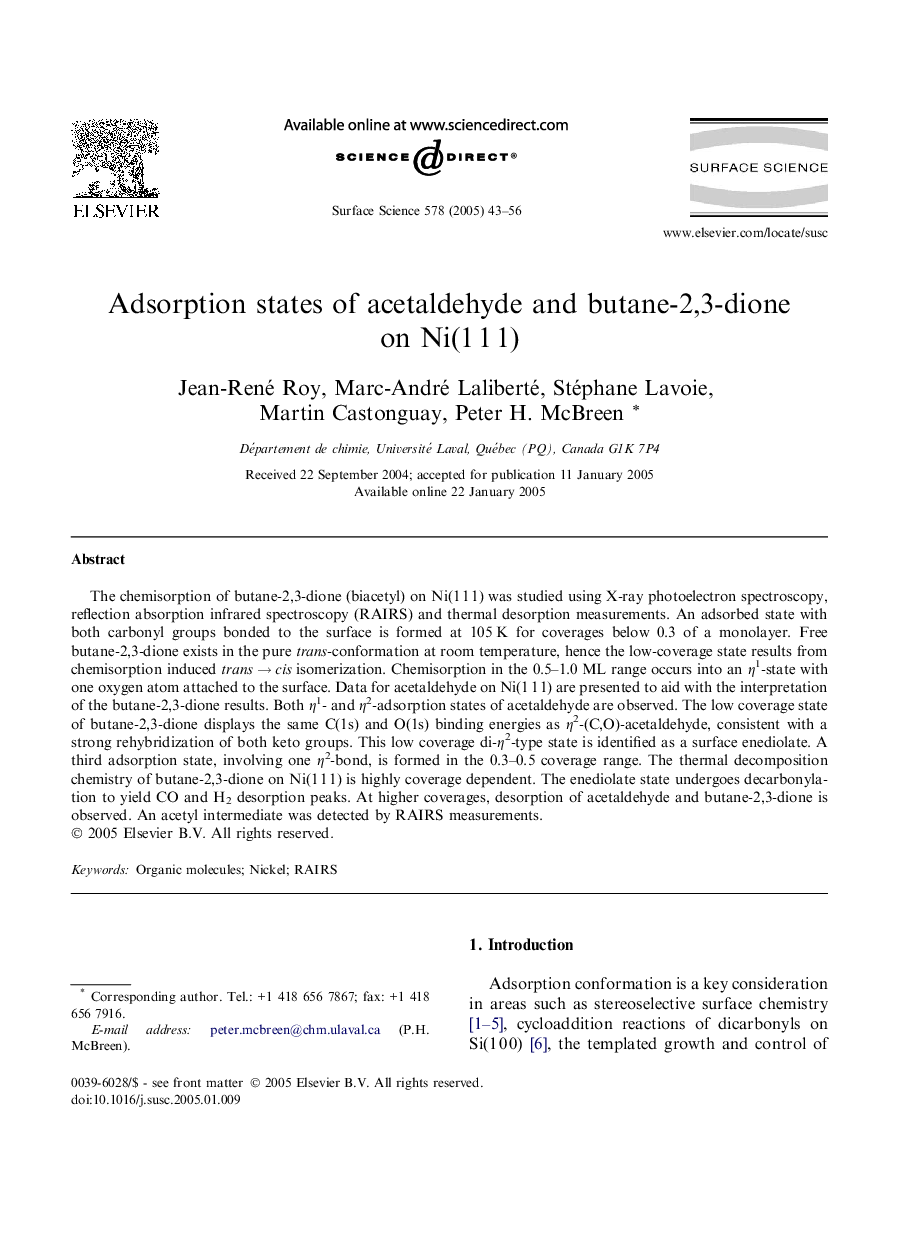| Article ID | Journal | Published Year | Pages | File Type |
|---|---|---|---|---|
| 9595691 | Surface Science | 2005 | 14 Pages |
Abstract
The chemisorption of butane-2,3-dione (biacetyl) on Ni(1 1 1) was studied using X-ray photoelectron spectroscopy, reflection absorption infrared spectroscopy (RAIRS) and thermal desorption measurements. An adsorbed state with both carbonyl groups bonded to the surface is formed at 105 K for coverages below 0.3 of a monolayer. Free butane-2,3-dione exists in the pure trans-conformation at room temperature, hence the low-coverage state results from chemisorption induced trans â cis isomerization. Chemisorption in the 0.5-1.0 ML range occurs into an η1-state with one oxygen atom attached to the surface. Data for acetaldehyde on Ni(1 1 1) are presented to aid with the interpretation of the butane-2,3-dione results. Both η1- and η2-adsorption states of acetaldehyde are observed. The low coverage state of butane-2,3-dione displays the same C(1s) and O(1s) binding energies as η2-(C,O)-acetaldehyde, consistent with a strong rehybridization of both keto groups. This low coverage di-η2-type state is identified as a surface enediolate. A third adsorption state, involving one η2-bond, is formed in the 0.3-0.5 coverage range. The thermal decomposition chemistry of butane-2,3-dione on Ni(1 1 1) is highly coverage dependent. The enediolate state undergoes decarbonylation to yield CO and H2 desorption peaks. At higher coverages, desorption of acetaldehyde and butane-2,3-dione is observed. An acetyl intermediate was detected by RAIRS measurements.
Keywords
Related Topics
Physical Sciences and Engineering
Chemistry
Physical and Theoretical Chemistry
Authors
Jean-René Roy, Marc-André Laliberté, Stéphane Lavoie, Martin Castonguay, Peter H. McBreen,
